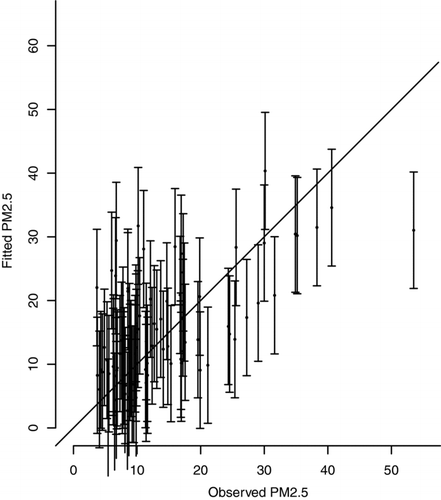Figures & data
TABLE 1 Results of the linear regression Model 1 for PM2.5 concentration as the dependent variable. The symbols *, **, and § indicate significance at 0.05, 0.01, and 0.001 levels, respectively. The adjusted r2 for this model is 0.59
TABLE 2 Results of the linear regression Model 2 for PM2.5 concentration as the dependent variable. The symbols *, **, and § indicate significance at 0.05, 0.01, and 0.001 levels, respectively. The adjusted r2 for this model is 0.66.
TABLE 3 Results of the linear regression Model 3 for PM2.5 concentration as the dependent variable. The symbols *, **, and § indicate significance at 0.05, 0.01, and 0.001 levels, respectively. The adjusted r2 for this model is 0.52.
FIG. 1 Fitted PM2.5 vs. Observed PM2.5. A random sample with size 100 is taken from all 3-h observations with valid observed data and fitted values. The length of error bars of the fitted values is set to the standard error from the linear regression.
